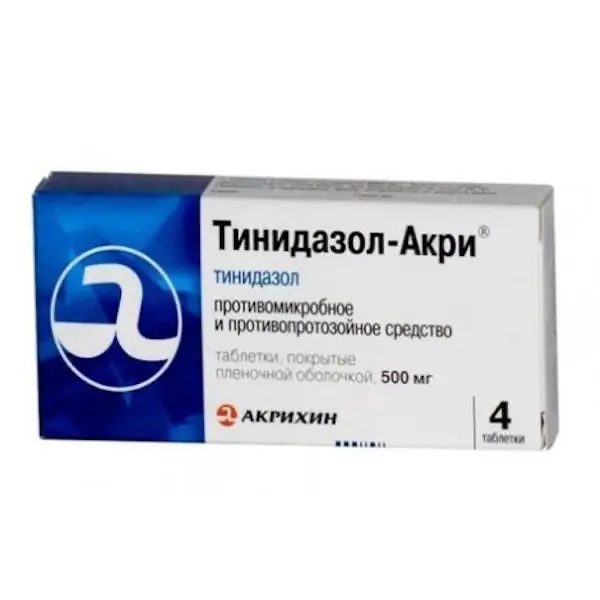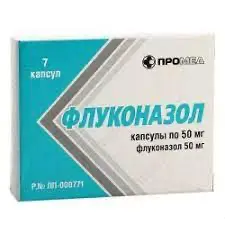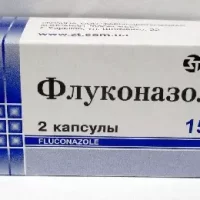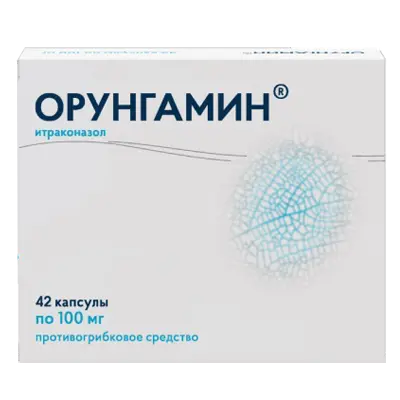Description
Tinidazole Pharmacodynamics
Antiprotozoal drug with antimicrobial action. Active against Trichomonas vaginalis, Entamoeba histolytica, Lamblia spp. It has a bactericidal effect against the following anaerobic microorganisms: Bacteroides spp., (including Bacteroides fragilis, Bacteroides melaninogenicus), Clostridium spp., Eubacterium spp., Fusobacterium spp., Peptococcus spp., Peptostreptococcus spp. Mechanism of action is due to inhibition of synthesis and damage of DNA structure of pathogens.
Indications
– Trichomoniasis (colpitis, endometritis, ovarian and tubovarian abscesses);
– giardiasis;
– Amebiasis (including intestinal and hepatic form);
– infections caused by anaerobic bacteria (in pneumonias, pleural empyema, lung abscess, skin and soft tissue infections, in acute ulcerative gingivitis);
– mixed aerobic-anaerobic infections (in combination with antibiotics);
– eradication of Helicobacter pylori (in combination with bismuth preparations and antibiotics).
The drug is used for prevention of postoperative infectious complications caused by anaerobes.
Contraindications
Hypersensitivity to the drug or other 5-nitroimidazole derivatives, organic diseases of the central nervous system, suppression of medullar hemopoiesis, 1st trimester of pregnancy, lactation, children (under 12 years).
Administration during pregnancy and breast-feeding:
The drug is contraindicated for use in the first trimester of pregnancy. Administration in II and III trimesters is possible only in cases when the estimated benefit to a mother exceeds the potential risk to a fetus. If it is necessary to use the drug during lactation, it is necessary to decide on stopping breast-feeding. It should be taken into account that tinidazole is detected in breast milk within 72 hours after administration.
Dosage and administration
- Tablets are taken orally with or after meals.
- For trichomoniasis and giardiasis the drug is prescribed once for adults, 2 g/day and 50-75 mg/kg body weight/day for children. If necessary, the drug may be repeated in the same dose.
- In intestinal amoebiasis the daily dose for adults is 2 g and the drug is taken for 2-3 days. For children, tinidazole is prescribed at the rate of 50-60 mg/kg/day; the course of treatment is 3 days.
- For hepatic amoebiasis in adults, the drug is prescribed in an initial dose of 1.5-2 g/day. The course of treatment is 3 days; if necessary, the therapy may be increased to 6 days. The course dose is 4.5-12 g, depending on the severity of infection. In children, tinidazole is prescribed in doses of 50-60 mg/kg/day; therapy duration is 5 days.
- When treating infections caused by anaerobes, adults are prescribed 2 g/day in 1 dose on the first day of treatment, then 1 g/day. Treatment is continued for 5-6 days.
- For prevention of postoperative complications in adults it is prescribed 2 g once 12 hours before surgery.
- Safety and efficacy of using the drug for treatment and prevention of anaerobic infections in children under 12 years old have not been established.





